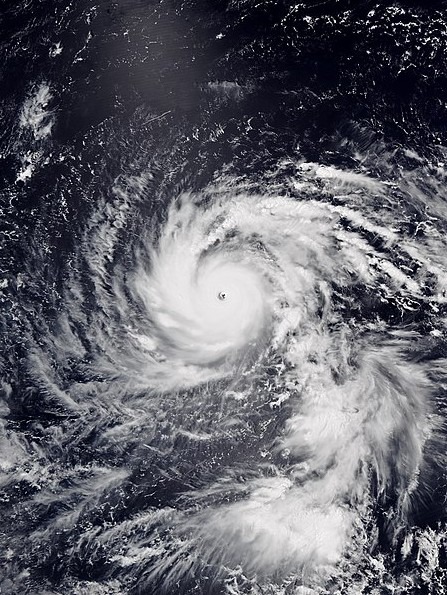Japan is hit by several typhoons every year, and sometimes it’s so destructive that it makes the front page of Western newspapers. About 30 typhoons form over the Northwest Pacific Ocean each year, and an average of seven to eight typhoons pass over the Okinawa Prefecture. About three typhoons hit the Japanese main islands yearly.
How and When Typhoons Occur in Japan
Typhoons are tropical depressions that form in the North Pacific Ocean above the countries in Southeast Asia. Most come from the Philippines, then it follows a north-eastern course through the Okinawa islands, Kyushu, Shikoku, then to Kansai up to Kanto.
In Japan, the typhoon season usually peaks in August and September, but typhoons hit between May and October. Sometimes, typhoons will hit the archipelago earlier during the year, which is not to be confused with a monsoon. Also, the typhoons are numbered, instead of being given a personal name. For instance, the eighth typhoon of the year is known as “typhoon number 8.”
Typhoons bring torrential rain and storms that can cause powerful waves to form, and may also trigger landslides. Casualties are frequent, as several people are reported missing or dead annually, while the injured may be counted by the dozen. Houses and infrastructures may still get damaged, but wind-swept debris is rare, especially in the large cities, unlike the cases in poorer Asian countries.
History of Typhoons in Japan
An average of 2.6 typhoons made landfall on the four major islands in Japan every year since records on typhoons have been kept in 1951. No typhoons have made landfall in the country in 1984, 1986, 2000, and 2008. The most number of typhoon landfalls happened in 2004 when ten typhoons landed in the country.
The most devastating typhoon after World War II was the Isewan Typhoon in September 1959, which cost the lives of more than 5,000 people – the most number of fatalities caused by a typhoon in Japanese history. A year before that, typhoon Ida (also known as the Kanogawa Typhoon) killed more than 1,200 people.
In recent history, the most severe typhoon was Typhoon No. 23, which hit Japan in October 2004. It brought heavy rains on a wide area covering Kyushu to central Japan, and flooded rivers in northern Kyoto Prefecture and Hyogo Prefecture. It killed 98 people and caused over 300 billion yens worth of damages.
For Japan, 2018 was a deadly year typhoon-wise, because of the large number of typhoons that hit the country that year. Typhoon Jebi was the most violent one in 25 years and caused 17 fatalities and injuries to more than 500 people. Some of the most pronounced damages were seen on Japan’s shoreline. Osaka area and power outages for 2.4 million households. A total of 5.2 billion yens were spent as cost for insurances. Kansai airport was flooded and was unable to operate for 17 days, leaving thousands of travelers stranded.
In September 2019, Tokyo was battered severely by Typhoon No. 15, also known as Typhoon Faxai. It caused significant damages, and the overcrowding of train stations as JR closed train traffic until 9 AM. Half a million households are left without power for several days and even several weeks in the Chiba area. Two people died due to heatstroke because of air conditioning failure.
After a month, Typhoon No. 19 called Typhoon Hagibis also hit the country’s capital. It was an extremely violent, large tropical cyclone that caused widespread destruction for eight days. It killed 98 people, injured more than 200 people, and damaged more than 85,000 homes. About 432,000 households suffered a temporary power outage for days. Several rivers have burst their banks that caused floodings, and the whole town of Hakone has been drenched under one meter of rainfall in 24 hours. This typhoon also caused Japan to cancel two matches of the Rugby World Cup: England – France, and New Zealand – Italy. Also, it closed the Tokyo Disney Resort for the first time since the 3/11 earthquake and tsunami.
